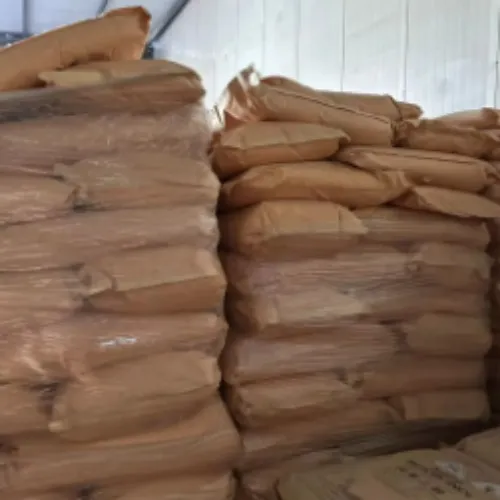Warning: Undefined array key "title" in /home/www/wwwroot/HTML/www.exportstart.com/wp-content/themes/1198/header.php on line 6
Warning: Undefined array key "file" in /home/www/wwwroot/HTML/www.exportstart.com/wp-content/themes/1198/header.php on line 7
Warning: Undefined array key "title" in /home/www/wwwroot/HTML/www.exportstart.com/wp-content/themes/1198/header.php on line 7
Warning: Undefined array key "title" in /home/www/wwwroot/HTML/www.exportstart.com/wp-content/themes/1198/header.php on line 7
- Afrikaans
- Albanian
- Amharic
- Arabic
- Armenian
- Azerbaijani
- Basque
- Belarusian
- Bengali
- Bosnian
- Bulgarian
- Catalan
- Cebuano
- China
- China (Taiwan)
- Corsican
- Croatian
- Czech
- Danish
- Dutch
- English
- Esperanto
- Estonian
- Finnish
- French
- Frisian
- Galician
- Georgian
- German
- Greek
- Gujarati
- Haitian Creole
- hausa
- hawaiian
- Hebrew
- Hindi
- Miao
- Hungarian
- Icelandic
- igbo
- Indonesian
- irish
- Italian
- Japanese
- Javanese
- Kannada
- kazakh
- Khmer
- Rwandese
- Korean
- Kurdish
- Kyrgyz
- Lao
- Latin
- Latvian
- Lithuanian
- Luxembourgish
- Macedonian
- Malgashi
- Malay
- Malayalam
- Maltese
- Maori
- Marathi
- Mongolian
- Myanmar
- Nepali
- Norwegian
- Norwegian
- Occitan
- Pashto
- Persian
- Polish
- Portuguese
- Punjabi
- Romanian
- Russian
- Samoan
- Scottish Gaelic
- Serbian
- Sesotho
- Shona
- Sindhi
- Sinhala
- Slovak
- Slovenian
- Somali
- Spanish
- Sundanese
- Swahili
- Swedish
- Tagalog
- Tajik
- Tamil
- Tatar
- Telugu
- Thai
- Turkish
- Turkmen
- Ukrainian
- Urdu
- Uighur
- Uzbek
- Vietnamese
- Welsh
- Bantu
- Yiddish
- Yoruba
- Zulu
Oct . 06, 2024 18:06 Back to list
propylene glycol and dipropylene glycol
Understanding Propylene Glycol and Dipropylene Glycol Versatile Compounds in Industry
Propylene glycol and dipropylene glycol are two important compounds widely used in various industries due to their unique properties and versatility. Both are colorless, odorless liquids with a low toxicity profile, making them safe for use in many applications, including food, pharmaceuticals, cosmetics, and industrial processes.
Propylene Glycol A Closer Look
Propylene glycol (PG), chemically known as propane-1,2-diol, is a synthetic organic compound derived from petroleum. It is hygroscopic, meaning it readily absorbs moisture from the air, which makes it a valuable ingredient in products requiring moisture retention. Propylene glycol has a broad range of applications. In the food industry, it serves as a food additive, classified as GRAS (Generally Recognized As Safe) by the FDA, and is used as a humectant, solvent, and preservative. It is commonly found in processed foods, baked goods, and snack items.
In the pharmaceutical sector, propylene glycol is used as a solvent for oral, injectable, and topical medications. Its ability to dissolve a wide variety of substances makes it essential for drug formulation. Additionally, PG is a key ingredient in various pharmaceutical products, including cough syrups and topical ointments, due to its non-irritating properties and skin compatibility.
In cosmetics and personal care products, propylene glycol acts as a moisturizer, helping to retain skin hydration. Its low toxicity and skin penetration capabilities enable its use in lotions, creams, and other skincare products.
Dipropylene Glycol An Extension of Propylene Glycol
Dipropylene glycol (DPG) is a more complex derivative of propylene glycol, formed through the dimerization of propylene glycol molecules. With a slightly higher molecular weight, dipropylene glycol has different properties and applications compared to its smaller counterpart. Its characteristics make it a preferred choice in industrial applications, particularly in the manufacture of plastics, resins, and certain types of antifreeze products.
propylene glycol and dipropylene glycol

In personal care formulations, dipropylene glycol serves as a skin-conditioning agent and solvent, enhancing the texture and stability of products. It is often used in perfumery as a fixative, helping to retain the fragrance and ensure a longer-lasting scent. The ability of dipropylene glycol to solubilize essential oils and aromatic compounds makes it a valuable component in the fragrance industry.
Moreover, DPG is utilized as a component in glycol ethers, which are essential solvents in paint and coatings industries. They enhance the performance of products like varnishes, inks, and adhesives, providing better flow and film formation.
Safety and Environmental Considerations
Both propylene glycol and dipropylene glycol are recognized for their low toxicity and favorable safety profiles. They are non-carcinogenic and are generally considered safe for use in consumer products. However, as with all chemicals, it is important to handle them according to recommended safety guidelines to minimize any potential health risks.
From a sustainability perspective, the production of propylene glycol and dipropylene glycol is increasingly shifting towards more environmentally friendly methods, including the use of bio-based feedstocks, which contribute to lower carbon emissions and a smaller ecological footprint.
Conclusion
Propylene glycol and dipropylene glycol are indispensable compounds that play crucial roles in various industries. Their unique properties allow them to serve multiple functions across food, pharmaceutical, cosmetics, and industrial applications. As industries continue to innovate and improve formulations, these compounds will undoubtedly remain key players, contributing to the development of safe and effective products that enhance our daily lives.
Latest news
-
Certifications for Vegetarian and Xanthan Gum Vegetarian
NewsJun.17,2025
-
Sustainability Trends Reshaping the SLES N70 Market
NewsJun.17,2025
-
Propylene Glycol Use in Vaccines: Balancing Function and Perception
NewsJun.17,2025
-
Petroleum Jelly in Skincare: Balancing Benefits and Backlash
NewsJun.17,2025
-
Energy Price Volatility and Ripple Effect on Caprolactam Markets
NewsJun.17,2025
-
Spectroscopic Techniques for Adipic Acid Molecular Weight
NewsJun.17,2025

